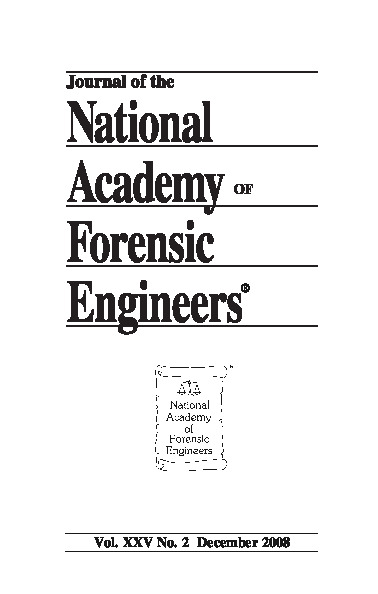Forensic Engineering Analysis Of Firearms Trigger Incidents
DOI:
https://doi.org/10.51501/jotnafe.v25i2.702Keywords:
FirearmsAbstract
Firearms Trigger Operating Characteristics Have Long Been Evaluated Using Inappropriate Rudimentary Equipment That Yields Incomplete And Inconsistent Data. These Commonly Used, And Widely Accepted, Peak Force Techniques Yield Minimal Data That Are Inappropriate For Their Intended Purpose And, Consequently, Often Result In Erroneous Conclusions Being Drawn. The Majority Of Those Performing The Tests And Presenting Their Analyses In Courts Are Not Engineers, And Typically Refuse To Acknowledge The Shortcomings Of Their Test Procedures And Analytical Techniques, Even After Detailed Explanation Has Been Provided. Historically, Scientifically Valid Trigger Mechanism Evaluation Techniques Were Slow And Labor Intensive To Perform. The Advent Of Micro-Electronics Has Resulted In The Availability Of Cost Effective, Portable, Scientifically Valid, Accurate, Fast, And Reliable, Trigger Mechanism Evaluation Equipment. This Equipment Minimizes The Need For Firearm Disassembly And, Consequently, Greatly Diminishes Evidence Spoliation Concerns. This Paper Contrasts The Results Obtained From The Use Of Inappropriate And Outdated Peak Force Techniques When Compared To Modern Computerized Electromechanical Techniques. Actual Case Studies Are Used To Illustrate How Inappropriately Qualified Crime Lab Personnel Using The Established, Though Scientifically Invalid, Peak Force Evaluation Techniques May Lead To Injustice In Both Criminal And Civil Litigation. It Is Recommended That The Scientifically Invalid Peak Force Test Procedures Be Abandoned, And That Appropriately Qualified And Trained Professionals Adopt The Scientifically Valid Electro-Mechanical Trigger Test And Evaluation Techniques Described In This Paper.Published
2008-01-01
How to Cite
Nixon, John R. 2008. “Forensic Engineering Analysis Of Firearms Trigger Incidents”. Journal of the National Academy of Forensic Engineers 25 (2). https://doi.org/10.51501/jotnafe.v25i2.702.
Issue
Section
Articles
License
Copyright (c) 2008 National Academy of Forensic Engineers

This work is licensed under a Creative Commons Attribution-NoDerivatives 4.0 International License.
All rights © Journal of the National Academy of Forensic Engineers.
Full statement regarding the author's license of copyright to the NAFE is shown on the Copyright section of the Submissions Page.






